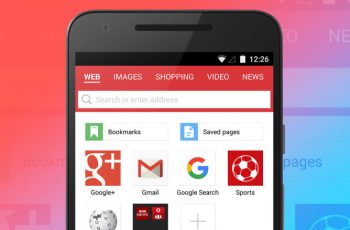Today, I’m going to teach you how you can start your blog in Nigeria. Some people start a blog for the purpose of making money while others do it for fun. Others go into blogging due to their passion for information dissemination.
For example, if you are concerned about issues in the society and you want to air your views on a self-owned and self-managed platform, you may decide to create a blog on that and air your views.
Whatever might be the reason you have for starting a blog, this article is going to be a helpful to you. Since you need money to keep a blog up and running, I have decided to throw in a few tips on how you can make money from your blog.
For example, this blog that you are reading now is a blog on entrepreneurship. It was created for the sole aim of sharing useful information on entrepreneurship in Nigeria.
However, besides the passion for the subject, “entrepreneurship” for which it was created this blog, this blog makes some decent money on a consistent basis.

Putting Together a Plan to Start a Blog
In this article, I am going to show you how to create a blog like this and how you can make money with it also.
So, without further ado, let’s get started by answering 2 questions:
- What do we need to create our blog?
- What you need to know to get your blog running on the internet?
The 5 Steps to Starting A Blog in Nigeria
(1) Choose and Settle on A Blogging Niche
The first thing that you need to do is to decide on the blogging niche that you want to go into. What I mean by that is deciding on your blogging area or what you want to blog about? In other words, which area(s) of interest are you going to be publishing contents on such that when people search for solutions to those problems on the internet they would be pointed to your blog? That is what I mean by blogging niche (problem or area(s) of interest)
(2) Get a Domain Name and Web Hosting
Every blog that you see on the internet has an address known technically as Domain name or Uniform Resource Locator (URL). In simple terms, your blog’s Domain name is the official name of your blog on the internet.
It uniquely identifies your blog on the web from other blogs. It is something like www.blablabla.com; where “blablabla” represents the name of your blog.
Besides your Domain name, you need a web hosting account to store your blog online. For this purpose I gladly recommend Namecheap.com. You can get your domain name and web hosting from Namecheap.
In fact, I recommend that you get your domain name and web hosting on Namecheap.com at once rather than buying them from different sites or companies. It is safer this way and makes for easy integration.
What is web hosting?
Web hosting is a technical term for a storage location on the internet where your blog files – text articles, images, videos, info-graphics, hypertexts (i.e., web links), etc. are housed.
(3) Install a Blog Software (WordPress, Themes)
Understand that a blog is a piece of software that runs on proprietary software on the internet. There is much proprietary software for running a blog online. Some of them include WordPress, Joomla, Wix, etc.
For this article, we will be using WordPress to create our blog. WordPress is arguably the most widely used blogging platform in the world for now. It is easier to install, use, customize and upgrade to whatever level of human imagination and artistry. Besides, WordPress is faster and lightweight.
So, you will simply install WordPress on your web hosting account and go ahead to install one of thousands of blogging software popularly referred to as “Theme” or “Template” on the WordPress installation that you just did.
(4) Blog Customization
Now that you have installed you blog theme/template, the nest thing to do is to design it to suit your taste. This design involves customizing the appearance of the blog to take the shape, colours, features –categories, menus, pages, posts, and widgets that you want users to see on landing on your blog.
Today, we have modern themes that are drag-and-drop enabled such that you can easily move features around without writing a line of code. So, if you are someone who hates code or writing codes, then this got you covered as you may not have to touch or write a line of code to get your blog running.
Interestingly, there are a lot of page builder software today which can make your page designs seamless and very intriguing. Examples include Insabuilder, Elementor, Beaver Builder, Thrive Architect, WPBakery Page Builder, and Divi Builder. Others are SiteOrigin Page Builder, WP Page Builder, Visual Composer, Brizy and, Themify Builder. You can use any of these together with the in-built feature in your WordPress theme to customize your blog to your taste.
(5) Content Publishing and Search Engine Optimization (SEO)
Content refers to the article that you publish on your blog. Most times, these are textual pieces that come with graphics – images, videos, info-graphics, etc. For your blog to gain the expected respect and stand out from the crowd, you should endeavor to publish only original and useful contents regularly.
Besides, you should optimize your blog contents such that it would be easy for users to read and get the needed solution for which they visited.
Of course, before someone would visit your blog from a search engine, your blog content and general design should be search-engine optimized. Hence, you should take your Search-Engine Optimization (SEO) strategies very importantly and try to ensure that your blog is both On-page SEO and Off-page SEO optimized as much as possible.
So, friend, that brings to a close this article on start a blog in Nigeria. I hope that you learned a thing or more from this article.
Got questions or contributions to this? Please, comment below and let me know.
Also, share this article with your friends on social media.

